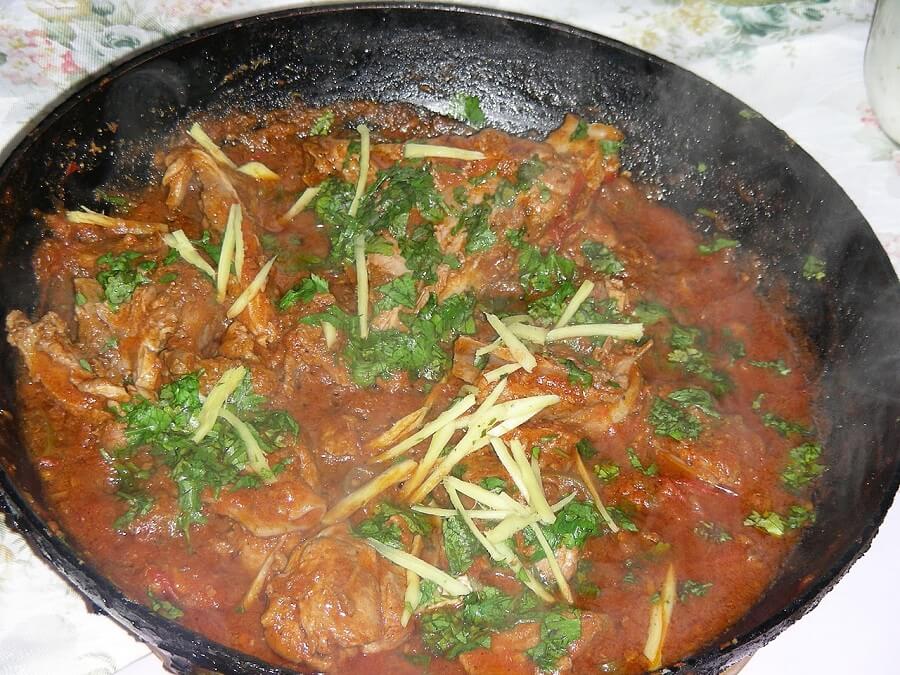What is Balti?
Understanding Spices
Your cart is empty.
SUBTOTAL
£0.00

Understanding Spices
No matter which Indian restaurant you’re eating at, we can guarantee Batli is on the menu. You can bet your house on it. We all love to see that beautifully coloured curry coming out fresh and sizzling in the still-burning-hot pan. It’s what makes the whole experience. Indeed, the dish is so popular here in the UK that there are not just Indian restaurants but ‘Balti houses’. So, where did this dish come from? What is it? And why is it so popular?
First things first, a Balti is a type of lamb or goat curry, although you may find variants using chicken and many other meats. If done correctly, you should always have it served to you in a sizzling, thin, pressed-steel wok that’s called a ‘Balti bowl’ and it’s this metal dish that gives the curry its name. Translated from Hindustani, Odia and Bengali, this word means ‘bucket’ (in other words, cooking pan) which most likely developed from the Portuguese word ‘balde’ which meant bucket or pail.
But hang on a minute? How does a Portuguese word end up on the Indian subcontinent? Well, during the 16th century, the Portuguese were operating an Empire on a global scale. Indeed, which European country wasn’t? One of their many seafaring enterprises no doubt brought ‘balde’ to India and it evolved from there. Naturally, when the British Empire took control of India, the word made it over.

Although many argue that the dish is called Balti due to the fact it’s cooked in a pan resembling a bucket, some others believe that the origins of the word and dish can be traced right back to a place called Baltistan, in Northern Pakistan. Here, they used a cast-iron wok for cooking, not dissimilar to a Chinese wok. Rather than one long handle however, it had two small handles – one on either side of the pan. This is unsurprising given the area’s close proximity to China. Despite the links, the food eaten in this mountainous region does not particularly resemble anything close to the classic Batli dish and so, the debate and research continues!
What cannot be refuted is how the humble Balti finally ended up in the UK. In 1971, the dish appeared in Birmingham and it wasn’t long before plenty of ‘Balti houses’ were popping up all around Ladypool Road, Stoney Lane, and Stratford Road. This cluster to the south of Birmingham city center is still referred to as the ‘Balti triangle’ and it’s where Brits really fell in love with it.

Its popularity rose throughout the 80s as more and more restaurants opened first through the West Midlands and then further, throughout the whole of the UK. Today, it’s as popular and synonymous with the country’s takeaway and culinary scene as fish and chips. Of course, you’ll always find the purists who will argue that you can’t get a ‘proper’ Balti outside of Birmingham. Indeed, in 2012, The Birmingham Balti Association (BBA) put in a private bid to have the “Birmingham Balti” name protected by an EU scheme.
So, what makes it so good? If you have a look at our Organic Balti Garam Masala mix, you’ll see that it’s packed full of flavour and spice with cumin, coriander seeds, cinnamon, clove and black peppercorns. What makes Balti curries stand out is that, unlike many other traditional one-pot Indian curries which are simmered slowly over the course of a day, Baltis are cooked up quickly over a high heat – very much like a stir fry. You see why the westerners liked this one? We love our food to be served up quickly and efficiently and it’s thought this is why Batli took off so well.

Hungry yet? If you’re thinking of making the dish yourself, you can find our full Balti Chicken Pasanda recipe right here!
Of course, whatever type of Balti you end up cooking, it must be served in the pan. This keeps the curry nice and hot as you eat, not to mention it looks and sounds great as it sizzles away. You want spice and heat, you’ve got it. Furthermore, the dish plays an important role in retaining all of the curry’s many flavours as many of Birmingham’s Balti Triangle masters will tell you.
Lastly, if you’re keeping things nice and traditional, put the cutlery to one side. Yes, it may be messy, but there’s no better way to eat a Balti than to tear off your warm naan bread on the side and use it to scoop up and eat the curry. It also makes a great sponge to soak up all the hot sauce and wipe the bowl clean at the end.


Understanding Spices
Spices have long been integral to the UK's culinary landscape, adding depth, flavours, and richness to a myriad of dishes. From the pungent aroma of cumin in Indian curries to...
Read MoreUnderstanding Spices
Confetti is an essential part of any wedding day. Not only is it a wonderful way to greet a newlywed couple, but it also provides some beautiful photo opportunities. The...
Read MoreSeasonal Ideas
It’s no secret that any handmade gift will always be more special than a store-bought one. Homemade food gifts are especially wonderful, a labour of love that shows someone you...
Read MoreHealth and Wellbeing
It’s no secret that winter’s cold and gloomy weather makes us crave indulgent dishes like fondue and baked goods like sticky toffee pudding and apple crumble. While Christmas is the...
Read More